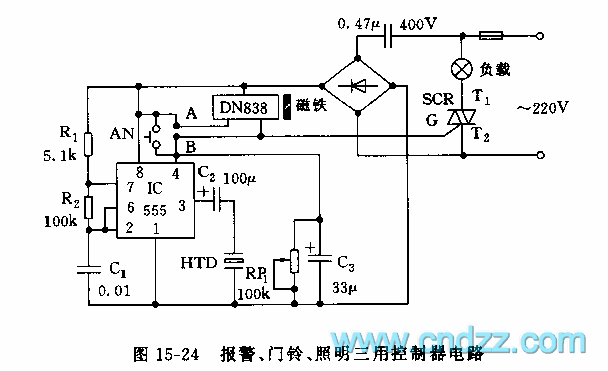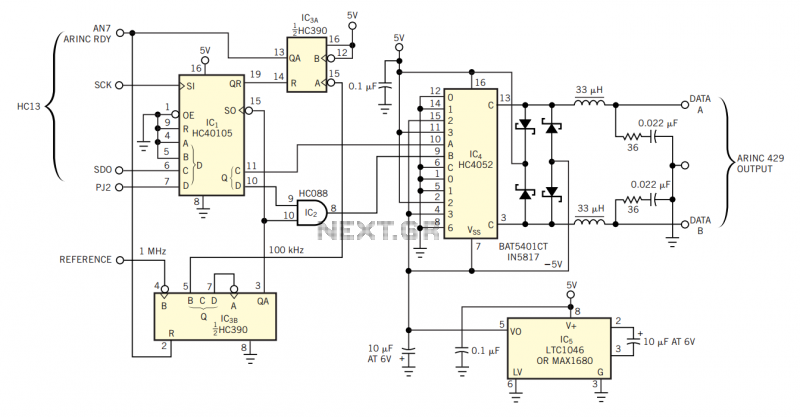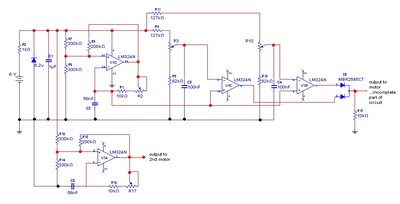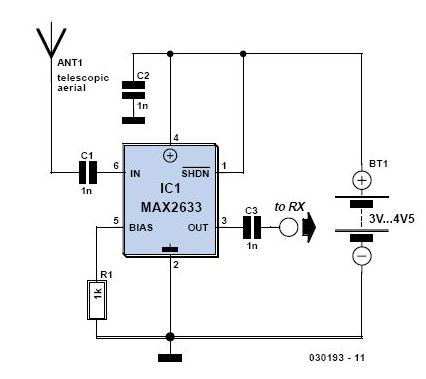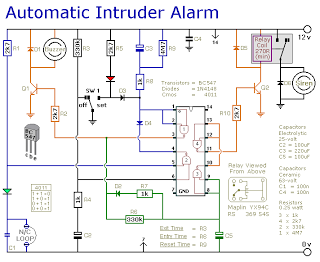
Clock circuit using SX 28 internal oscillator
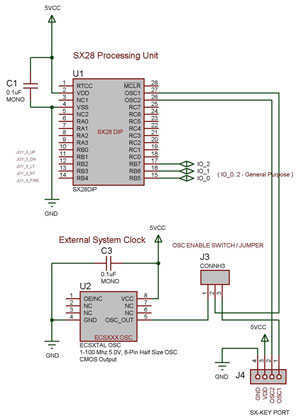
The SX 28 internal oscillator is not that fast, so an external oscillator can be hooked up to the processor as shown in the diagram to increase the operation cycles per second.
The SX 28 microcontroller is designed with an internal oscillator that operates at a relatively low frequency, which may limit the performance of applications requiring higher processing speeds. To address this limitation, an external oscillator can be connected to the microcontroller to enhance its operational frequency.
In a typical configuration, the external oscillator is connected to specific pins on the SX 28, usually designated for clock input. The oscillator can be a crystal oscillator or a resonator, depending on the desired frequency stability and precision. The choice of oscillator will influence the overall performance, as crystal oscillators generally provide better accuracy and temperature stability compared to resonators.
When implementing this circuit, it is essential to consider the following components and connections:
1. **External Oscillator**: Select an oscillator that meets the required frequency specifications for the application. Common frequencies range from a few kHz to several MHz.
2. **Capacitors**: Depending on the type of oscillator used, load capacitors may be required to ensure stable operation. These capacitors should be placed close to the oscillator pins to minimize parasitic effects.
3. **Power Supply**: Ensure that the power supply voltage levels are compatible with both the SX 28 and the external oscillator. Proper decoupling capacitors should be placed near the power pins to filter out noise.
4. **PCB Layout Considerations**: The layout of the printed circuit board (PCB) should minimize the length of the traces connecting the oscillator to the microcontroller to reduce inductance and capacitance effects that can distort the clock signal.
5. **Configuration Registers**: After connecting the external oscillator, it may be necessary to configure the microcontroller's internal registers to recognize the external clock source, allowing it to function correctly at the increased frequency.
By integrating an external oscillator, the SX 28 microcontroller can achieve higher operation cycles per second, thereby improving the performance of time-sensitive applications such as signal processing, communication, and control systems.The SX 28 internal oscillator Is not that fast so an external oscillator can be hooked up to the processor as shown in the diagram to increase the operation cycles per second. 🔗 External reference
The SX 28 microcontroller is designed with an internal oscillator that operates at a relatively low frequency, which may limit the performance of applications requiring higher processing speeds. To address this limitation, an external oscillator can be connected to the microcontroller to enhance its operational frequency.
In a typical configuration, the external oscillator is connected to specific pins on the SX 28, usually designated for clock input. The oscillator can be a crystal oscillator or a resonator, depending on the desired frequency stability and precision. The choice of oscillator will influence the overall performance, as crystal oscillators generally provide better accuracy and temperature stability compared to resonators.
When implementing this circuit, it is essential to consider the following components and connections:
1. **External Oscillator**: Select an oscillator that meets the required frequency specifications for the application. Common frequencies range from a few kHz to several MHz.
2. **Capacitors**: Depending on the type of oscillator used, load capacitors may be required to ensure stable operation. These capacitors should be placed close to the oscillator pins to minimize parasitic effects.
3. **Power Supply**: Ensure that the power supply voltage levels are compatible with both the SX 28 and the external oscillator. Proper decoupling capacitors should be placed near the power pins to filter out noise.
4. **PCB Layout Considerations**: The layout of the printed circuit board (PCB) should minimize the length of the traces connecting the oscillator to the microcontroller to reduce inductance and capacitance effects that can distort the clock signal.
5. **Configuration Registers**: After connecting the external oscillator, it may be necessary to configure the microcontroller's internal registers to recognize the external clock source, allowing it to function correctly at the increased frequency.
By integrating an external oscillator, the SX 28 microcontroller can achieve higher operation cycles per second, thereby improving the performance of time-sensitive applications such as signal processing, communication, and control systems.The SX 28 internal oscillator Is not that fast so an external oscillator can be hooked up to the processor as shown in the diagram to increase the operation cycles per second. 🔗 External reference

